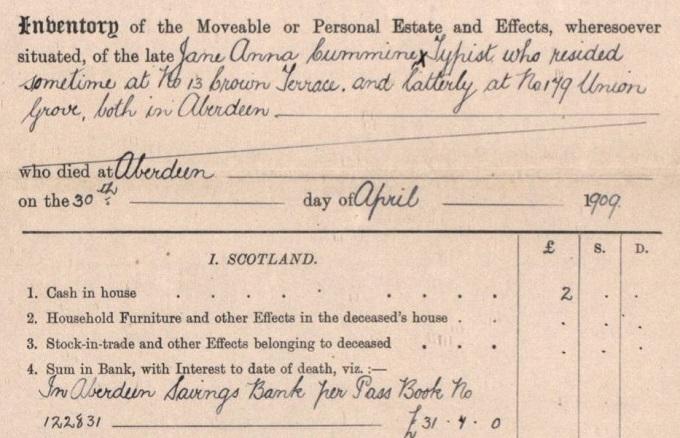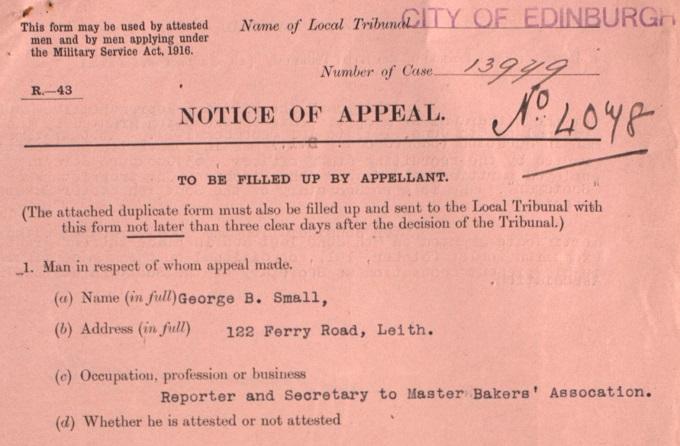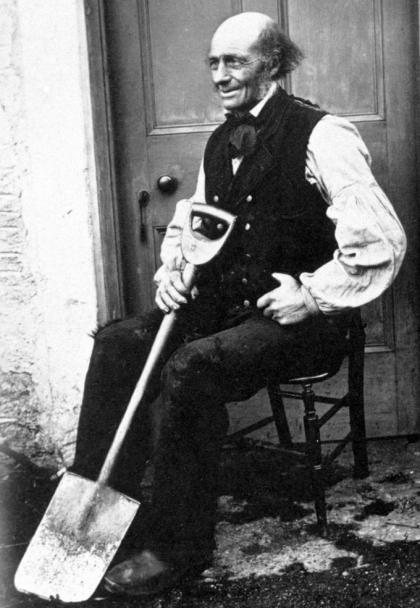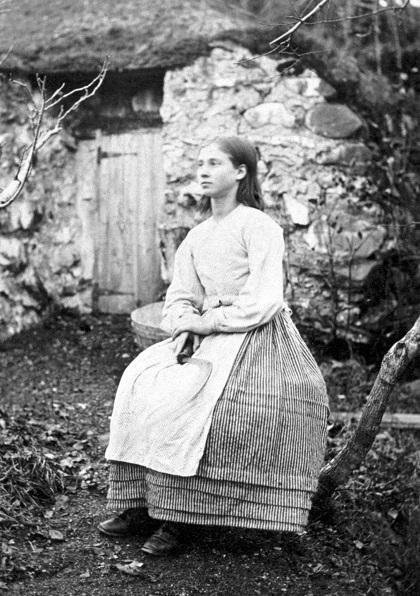Occupations and designations
Occupations and designations in the records
Searching by occupation or designation
How to search for occupations and designations in the wills and testaments
How to search for occupations and designations in the Military Service Appeals Tribunal records
How to search for occupations in the 1881 (LDS) census return transcriptions
How can I interpret occupations or designations?
Images of people at work in the Image Library
Occupations and designations in the records
Many records made available via ScotlandsPeople include details of a person’s occupation or designation (an official title or name). Some records can be searched by occupation or designation or the results sorted and filtered by occupation.
Legal Records
Records created by Scottish courts of law routinely include information about an individual’s occupation and/or designation. Military Service Appeals Tribunal records provide details of men seeking exemption from military service during the First World War. These include details of the appellant, his home, family or job, and the grounds upon which the appeal was based. Men or employers could claim exemption on the grounds that it was in the national interest to continue their current work. Exemptions were also considered on personal grounds, for example hardship, ill-health or conscientious objection. Soldiers’ and airmen’s wills record the battalion, regiment, rank and service number of the soldier, as well as the name of the person who is the beneficiary of the will. Wills and testaments often record the deceased’s title, status, occupation, and place of residence, or another designation. These documents may also mention the designation or occupation of other persons, for example, relatives or creditors of the deceased. Further information is available in the legal records' guide.

Detail of inventory of Jane Anna Cummine, typist, 1909 (National Records of Scotland, SC1/36/159, page 578)
Statutory Registers
Birth registers usually contain the rank, profession, or occupation of the father. The mother’s occupation or designation, and qualification of the informant may also be recorded. Records dated 1855-1918 also include the designation ‘illegitimate’ where applicable. Marriage register entries mostly contain the rank, profession or occupation of the bride and groom, as well as the rank or profession of their respective fathers, and a designation in regard to marital status (for example, single, married or widowed). Death register entries typically include the rank, profession or occupation of the deceased, as well as a designation in respect to marital status. The rank, profession, or occupation of the deceased’s father is also recorded. In addition, death register entries routinely include the qualification of the informant (for example, friend, or relative), and details of the medical attendant who certified the death. Records dated 1855-1860 also record the name of the undertaker. Further information is available in the statutory registers' guide.
Church Registers
Before statutory registration record-keeping standards varied enormously. Baptism registers sometimes record the father’s occupation, and occasionally the occupation of the witnesses. Banns and marriage registers may include the groom’s occupation, and occasionally the occupation of the bride’s father. Burial registers sometimes include the occupation of the deceased, and occasionally also their father or spouse. Further information is available in the church registers' guide.
Census Returns
Occupation is recorded from 1841 onwards and includes changes to rank, profession or occupation. In 1871 they could add unemployed to the occupation field; in 1881 there were categories for employer/employed/working on own account; from 1891 onwards, they could provide additional details about employment status; in 1901 an additional column was added to find out if the person was working from home and in 1911. Further information is available in the Census returns' guide.

Detail of census entry for Duncan Rankin, road contractor, 1871 (National Records of Scotland, Census return 1871/525/2 1, page 7)
Valuation Rolls
Valuation rolls list the owner of a property and the resident head of household (the persons responsible for paying local taxation). They do not list all the occupants of each house. The head of the household in a census return may not be listed as the tenant or occupier. In some instances, a person’s occupation may be recorded; this is more likely in the later valuation rolls. Further information is available in the valuation rolls' guide.
Searching by occupation or designation
You can search the wills and testaments, Military Service Appeals Tribunal records and 1881 LDS census transcriptions for occupation; the wills and testaments can also be searched for a designation.
How to search for occupations and designations in the wills and testaments
You can use the description field to search the wills and testaments index by title, occupation or place (where these are given). It is a free text field, in which you can enter text, and it accepts wildcards. You can search in any one of these categories at a time in addition to names and dates. The description field also often contains the name of the spouse of the deceased ('relict' in the case of widows).
However, it is important to note that search results may not be exact for two main reasons. Firstly, the description field contains several different categories of information (the deceased’s title, status, occupation and place of residence) which are not distinguished by the free text search.
For example, a search for candlemaker returns results for persons with an occupation of candlemaker and persons associated with the place Candlemaker Row:
- Amos, George, 28/6/1849, Tobacconist and candlemaker in Haddington, Haddington Sheriff Court, SC40/40/8.
- Amos, Joseph, 18/1/1864, Cabinet Manufacturer residing at No.70 Candlemaker Row in Edinburgh, Edinburgh Sheriff Court Inventories, SC70/1/119.
Secondly, the description field is based on the original records; there has been no attempt to standardise variations in spellings and terminology. For example a search for candlemaker would not include results for candle maker:
Amos, Joseph, 18/1/1864, candle maker, residing in Edinburgh, Edinburgh Sheriff Court Wills, SC70/4/90.
Furthermore, a search for golf club maker would not include results for golfclub maker, or golf cleek maker:
- Martin, James, 11/3/1921, golfclub maker, 9 Maule Street, Monifieth, d. 27/11/1920 at Monifieth, intestate, Dundee Sheriff Court, SC45/31/88.
- Swan, John Motion, 29/8/1900, Golf Cleek Maker, 3 Castle Street, Anstruther, d. 19/07/1900 at Anstruther, testate, Cupar Sheriff Court, SC20/50/82.
How to search for occupations and designations in the Military Service Appeals Tribunal records
You can use the occupation field to search the Military Service Appeals Tribunal records. It is a free text field, and it accepts wildcards. However, it is important to note that search results may not be exact, as there has been no attempt to standardise variations in spellings and terminology, or to classify occupations. For example, a search for baker includes results for different types of baker (such as Master baker, Journeyman baker, Pastry baker), as well as a result for Small, George Bruce, Reporter, secretary to Master Bakers Association, Edinburgh, 16/08/1917.

Detail of George Bruce Small's military appeal, 1917 (National Records of Scotland, HH30/18/3/12, page 1)
How to search for occupations in the 1881 (LDS) census return transcriptions
The 1881 (LDS) census index links to a transcription rather than a digital image of the record. The indexing was coordinated by the Church of Jesus Christ of Latter-Day Saints (LDS). The search form includes a field for searching by occupation. The transcriptions are free to view.
How can I interpret occupations and designations?
It is worth noting that people would change jobs quite frequently and/or that occupations were more fluid than they are now. The number of professions was smaller than it is today and jobs were not so clearly defined from the 17th to 19th centuries during the earlier stages of industrialisation/urbanisation. You may find people recorded in the different record sets with very varied occupations. An example of this is Duncan Rankin (illustrated below), whose occupation is recorded as a farmer in the 1861 census and then as a road contractor in the 1871 census (Rankin, Duncan, 1861/525/2 2, page 1. Rankin, Duncan, 1871/525/2 1, page 7).


Image on the left: photograph of D Rankin, road mender, Glen Creran, 1866 (National Records of Scotland, GD1/1208/1/44)
Image on the right: photograph of Flora, bracken cutter in Glen Creran, 1866 (National Records of Scotland, GD1/1208/1/37)
Images of people at work in the Image Library
The photographs of people featured in this guide are taken from our image library, which can be searched for images of people at work. The image library is particularly strong for certain types of employee, such as shipyard and engineering workers and agricultural employees. Some notable collections include women munitions workers dring the First World War and engineers and labourers working on the Forth Bridge.
Further reading
If you come across an unfamiliar occupation or designation in the records, you can try checking the Glossary for a definition as well the Dictionary of Scots Language for occupations that are Scots words. Alternatively, you could consult a published reference work such as 'A Dictionary of Occupational Terms: Ministry of Labour. Based on the Classification of Occupations Used in the Census of Population, 1921' (London: HMSO, 1927). An online edition, prepared by Peter Christian, 2016 is also available.
